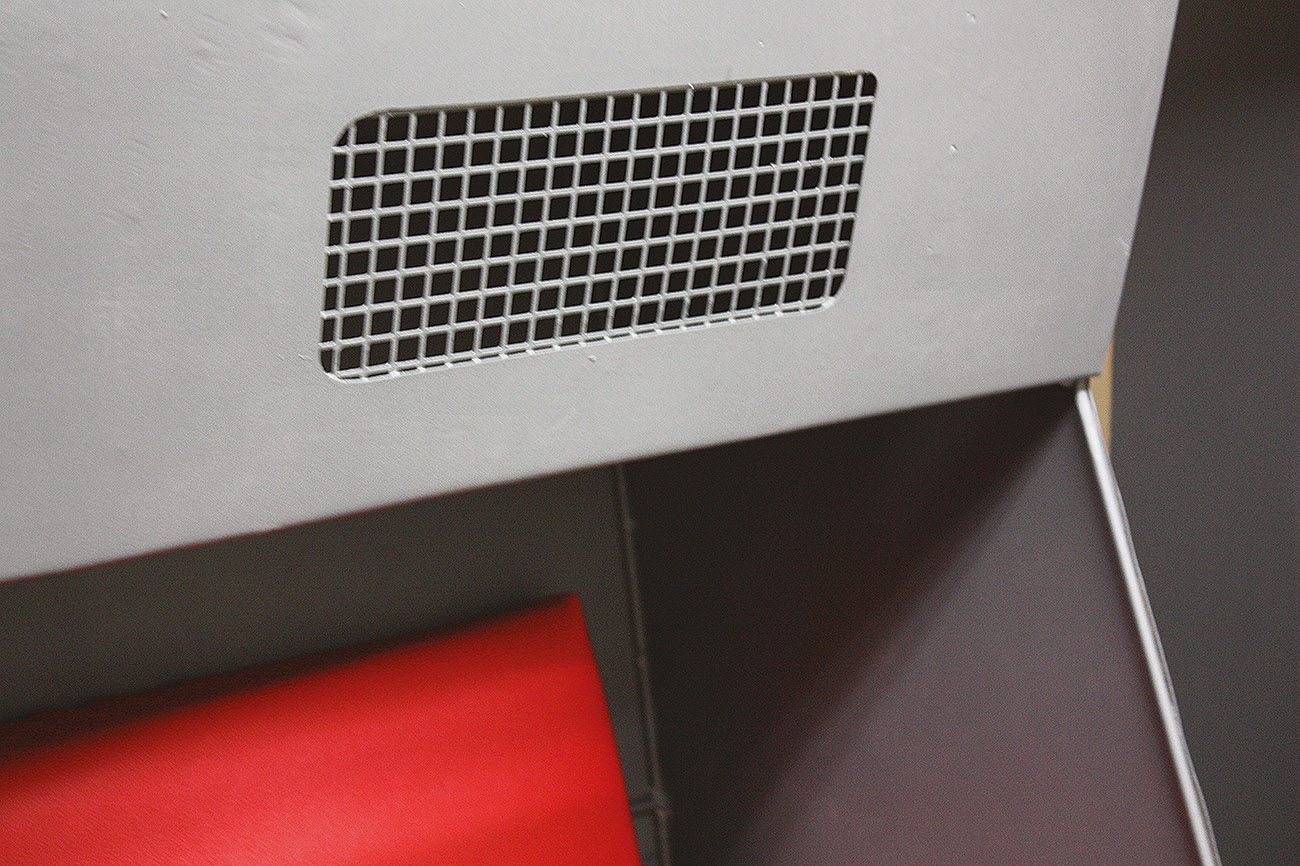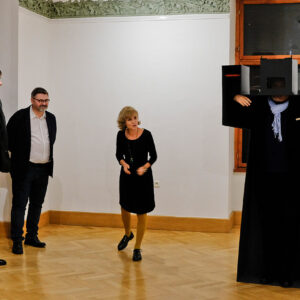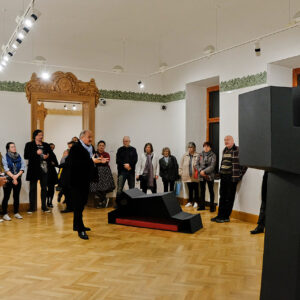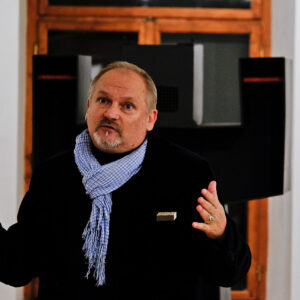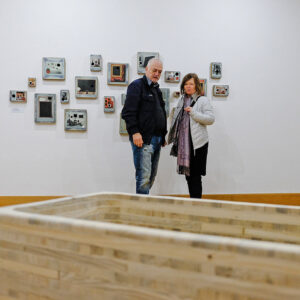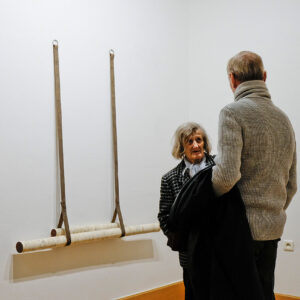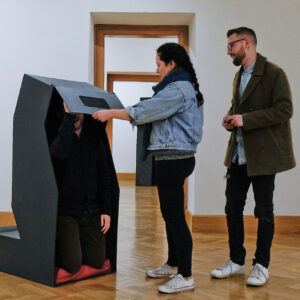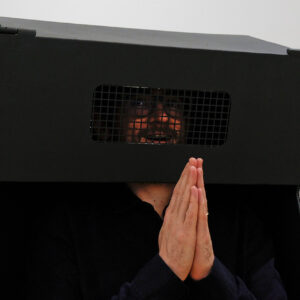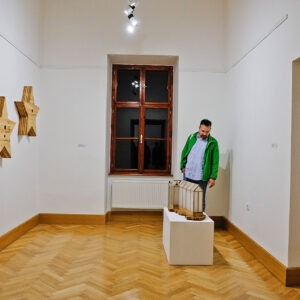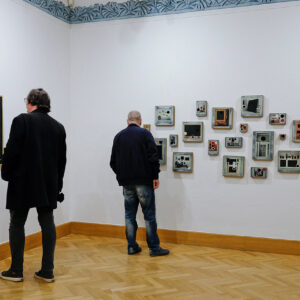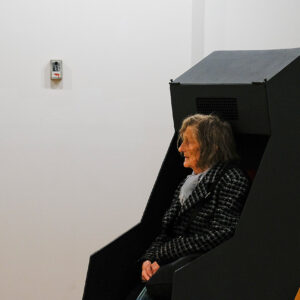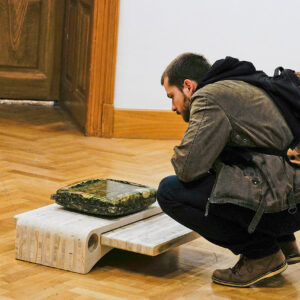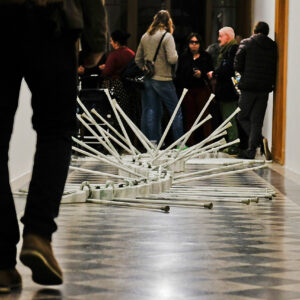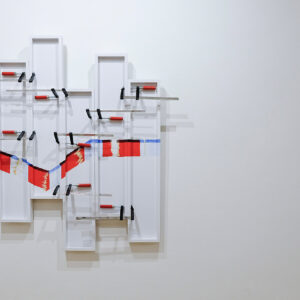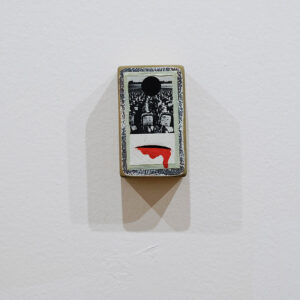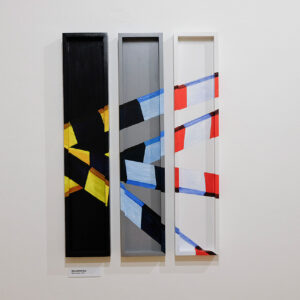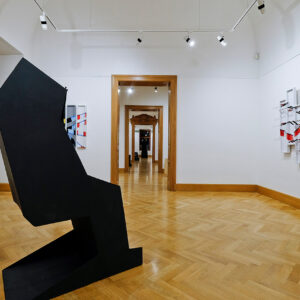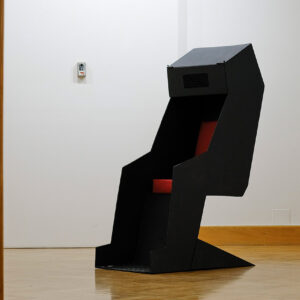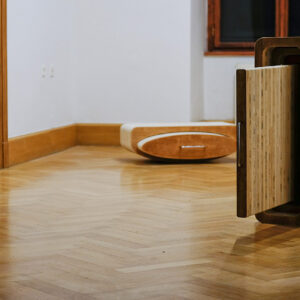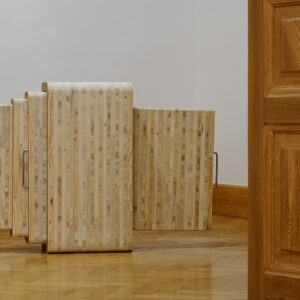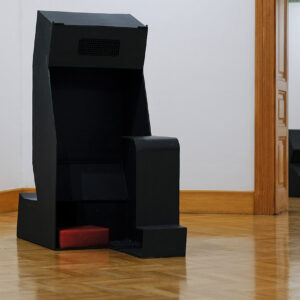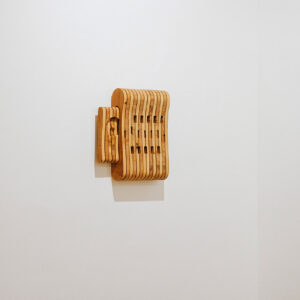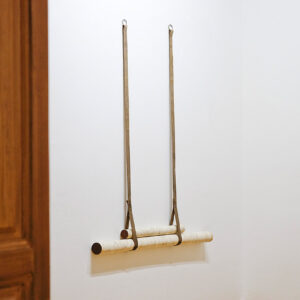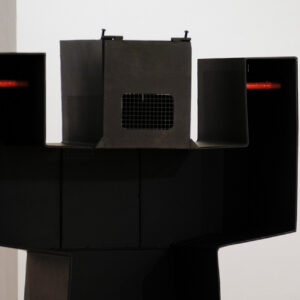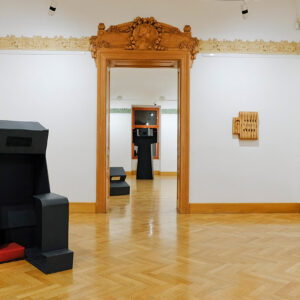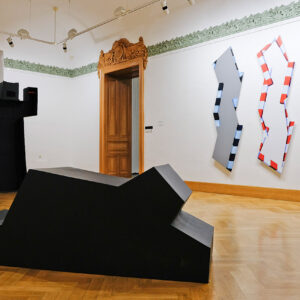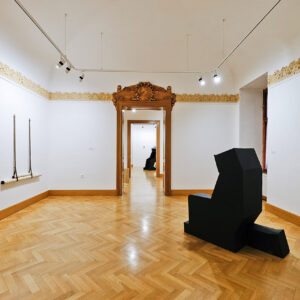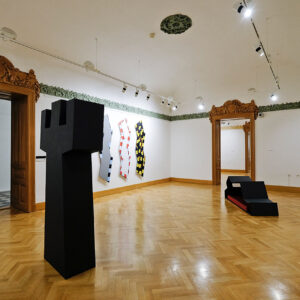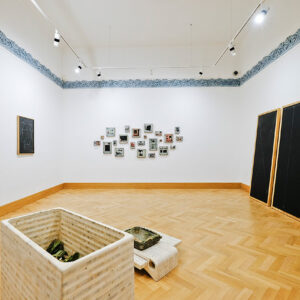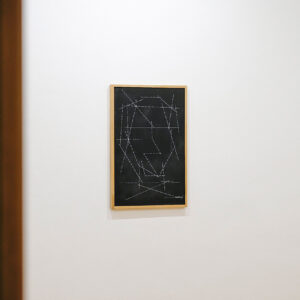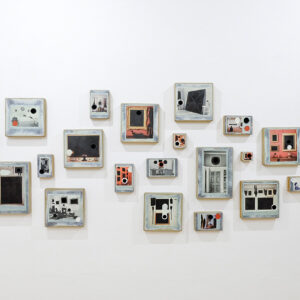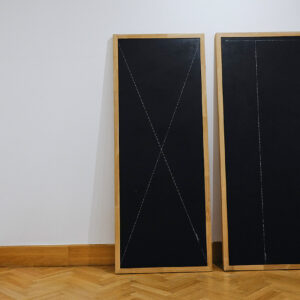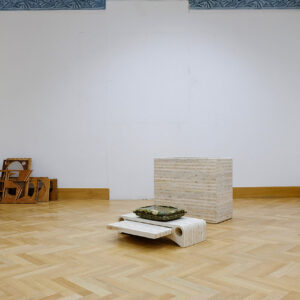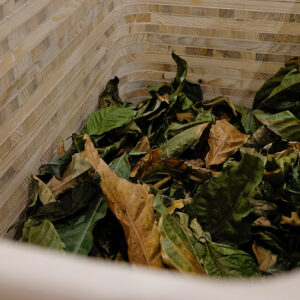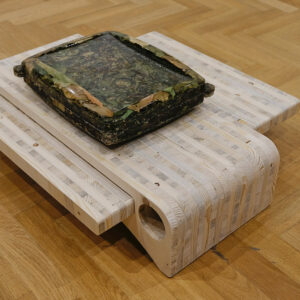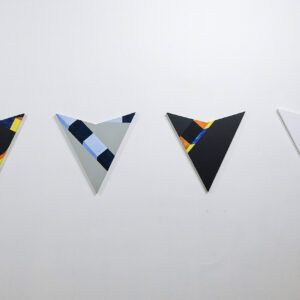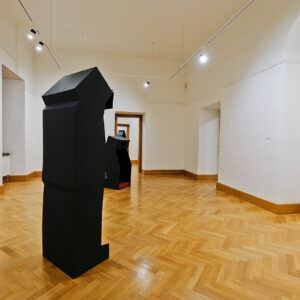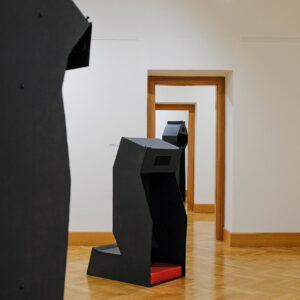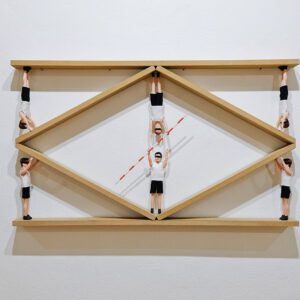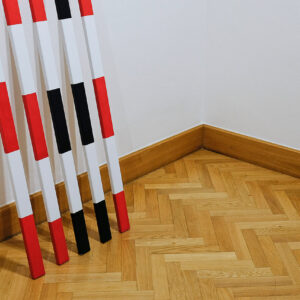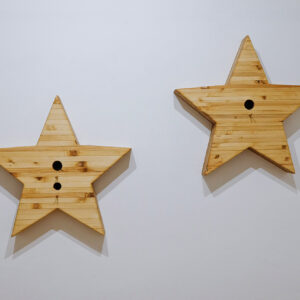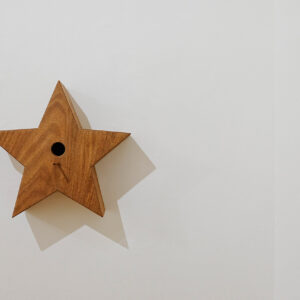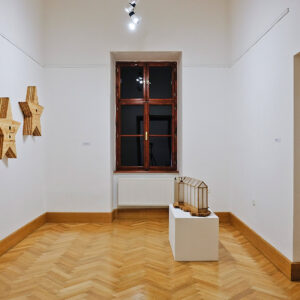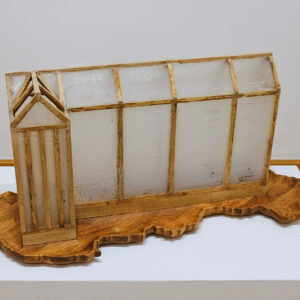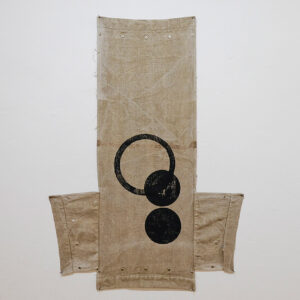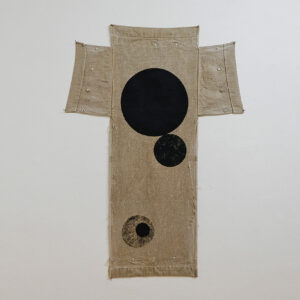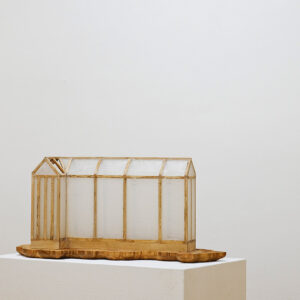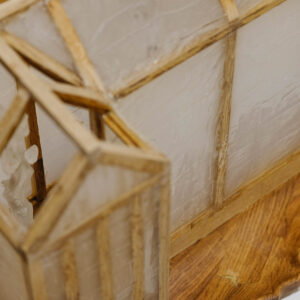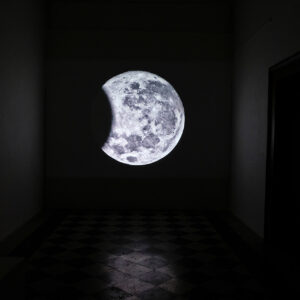Information
Artists
Marcin Berdyszak & Patrik Kovačovský
Curator
Vladimír Beskid
Opening
November 8, 2018 at 6PM
Open until
December 2, 2018
Venue
Representative Halls
Download
Marcin Berdyszak’s key series Coercive Armours (2018) features monumental metal sculptures. They are frighteningor even military-looking armoured metal shells with a narrow mesh vizor that can be used to observe the world. These negative sculptural masses force the viewer to fill them with their own body and take a position of a standing, kneeling or lying “brother-in-arms”. By literally pushing the viewer into the predetermined positions, the artist actively involves them in his creative process while also reminding them about all the limits and regulations we face every day. On top of that, Berdyszak adds a warning signal in the form of red and white or yellow and black striped edges that indicate danger (Large Triptych, Small Triptych, 2016) or even squeezing of “small” man into vast totalitarian systems (Unity and Propaganda, 2017; Totalitarian Geometry, 2016).
These works share their platform with Patrik Kovačovský’s series Compressions that present unexpected barricades and obstacles in geometrical compressions – an object of a broken branch (Circumstantial Barricade, 2017-18) or the red and white colour palette of a partially-cut ramp referencing a broader issue of migration and both physical and psychological obstacles (Barricade, 2018). The following cycle titled Compression as Secondary Recycling (2018) features a series of objects created from old furniture and follows the principles of moving mass. By pushing a movable model (a drawer), we create a hole on the other side, an empty space inside of mass. He uses a similar principle to create star-shaped bird cages from old mahogany furniture (Oligarch’s Bird Cage, 2018). Another theme referenced in his works is the passing of time – collection and compression of mass into geometric shapes, either acacia flowers (Event Remains, 2017-18) or a collection of picked-up leaves that had fallen over a period of a year (Time Capsule, 2018). He also introduces the topic of isolation with a piece featuring a greenhouse positioned on the map of Slovakia with a live plant inside that has long crawling stems, grasping on every obstacle (Separation, 2018).
In the middle of the exposition (in the main hallway) is Berdyszak’s Backbone of Culture (2012) that refers metaphorically to the “invalidity” of our cultural situation in the form of a lying skeleton of an archaic reptile. It consists of metal elements and walking sticks for the handicapped.
The Compression of Emptiness exhibition uses a currently relevant language of sculpture and addresses various ethical values. In the contemporary world of operational (and war) systems, objects and installations become external “backup” programs for the preservation of knowledge, vigilance, sensitivness (Berdyszak) or recognition of the past, separation and isolation (Kovačovský). The exhibition is another part of their long-term cooperation and joint presentations. The exhibition will be open until December 2, 2018.
prof. Marcin Berdyszak(born 1964) – contemporary Polish artist, sculptor and university teacher. Between 1983-1988 he studied at the Public University of Fine Arts in Poznań. He has been teaching atthe Universityof Fine Arts in Poznań since 1989. He was the President of the academy (Uniwersytet Artystyczny) between 2006-2016. Currently, he is the head of the Studio IV (of Sculpture and Spatial Activities). He lives and works in Poznań.
prof. Patrik Kovačovský(born 1970) – contemporary Slovak imtermedia artist and university teacher. Between 1990-1996 he studied at the Academy of Fine Arts and Design in Bratislava(prof. J. Gavula, prof. J. Jankovič). He has been teaching at AFAD since 1999. In 1996, he was the first to receive the Young Artist Award (today’s Oskár Čepan Award). Currently, he is the head of the Studio of Sculpture in 3D Virtual Space and in Architectureat Bratislava’s AFAD. He lives and works in Bratislava.
